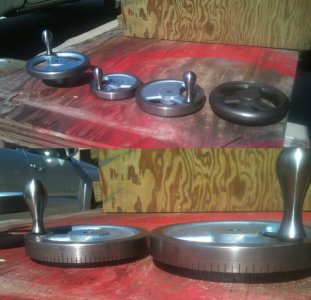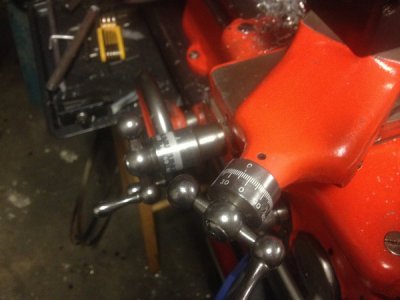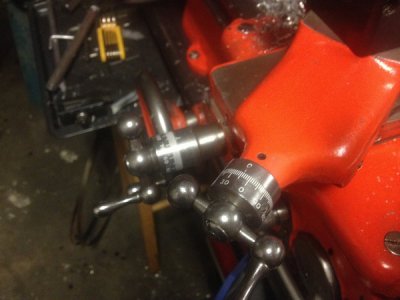- Joined
- Jul 26, 2011
- Messages
- 4,142
You could try Aluminum black,a chemical,not a paint. Abrade it off the surface. It will stay in the grads. Then,gun blue for the steel ones. If you can,get some that makes a black finish. Personally,I like the dials untreated. They came that way,mostly,from the factories(except the delrin Hardinge dials,which HAD to be blacked or you could not see the grads.)
I still agree that 1/16" numbers tapped with a small hammer aren't harmful even in steel(which is still rather soft stuff). Turning a square steel bar of tool steel would be a lot more forceful.
Be sure to stone your numbers FLAT. They look cheap when left with the displaced metal sticking up around their perimeters. Only a cheap rifle,like a J.C. Higgins .22 from the 50's(still have mine),and the like left their letters un flattened. Wait,did Winchester on recent guns? Well,things aren't what they USED to be!! They SHOULDA flatted them. Actually,quite a few modern made guns have pooched up lettering. Some people have NO ART in their souls. You know,even my 1986 Grizzly lathe has nicely flatted numbers on the dials(But,I could do WITHOUT that ugly hard chrome. Smooth steel looks better. Yeah,I know.... corrosion. Well,keep them up and don't LET them rust or discolor!!
I still agree that 1/16" numbers tapped with a small hammer aren't harmful even in steel(which is still rather soft stuff). Turning a square steel bar of tool steel would be a lot more forceful.
Be sure to stone your numbers FLAT. They look cheap when left with the displaced metal sticking up around their perimeters. Only a cheap rifle,like a J.C. Higgins .22 from the 50's(still have mine),and the like left their letters un flattened. Wait,did Winchester on recent guns? Well,things aren't what they USED to be!! They SHOULDA flatted them. Actually,quite a few modern made guns have pooched up lettering. Some people have NO ART in their souls. You know,even my 1986 Grizzly lathe has nicely flatted numbers on the dials(But,I could do WITHOUT that ugly hard chrome. Smooth steel looks better. Yeah,I know.... corrosion. Well,keep them up and don't LET them rust or discolor!!




